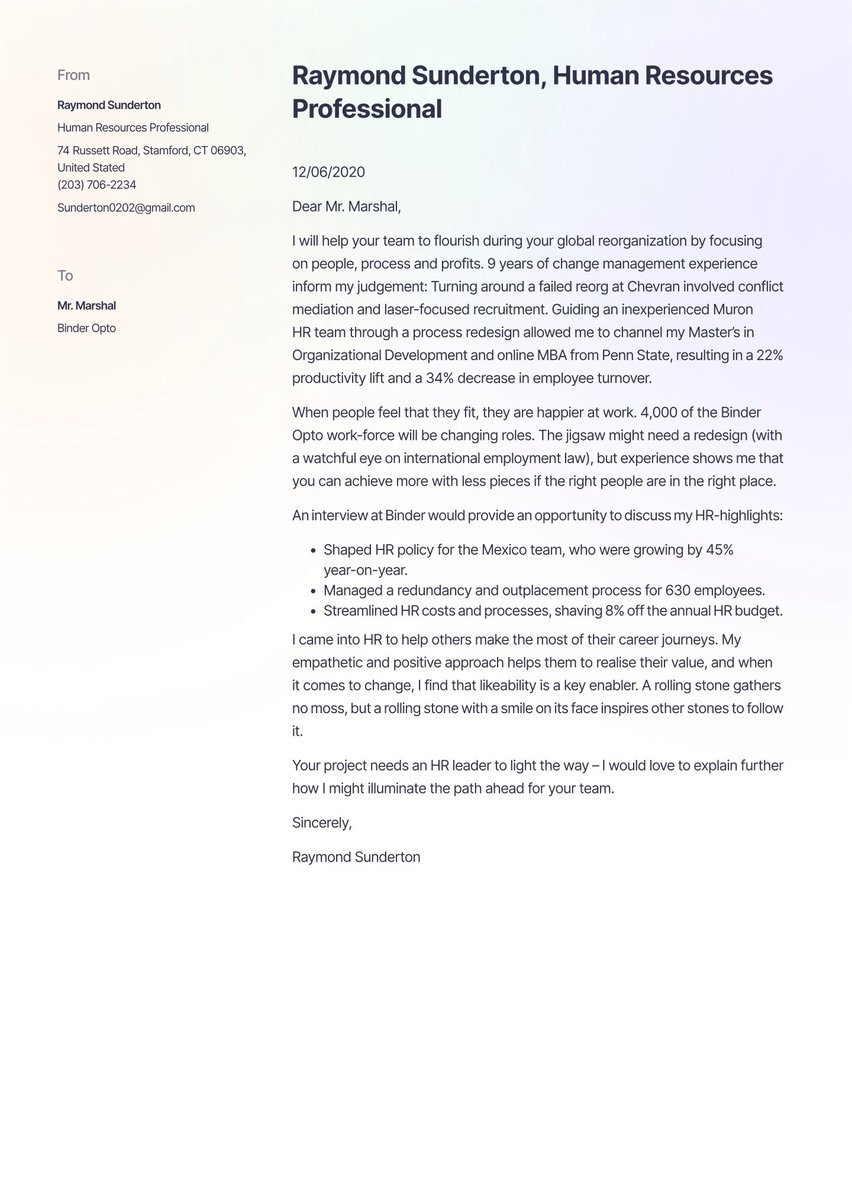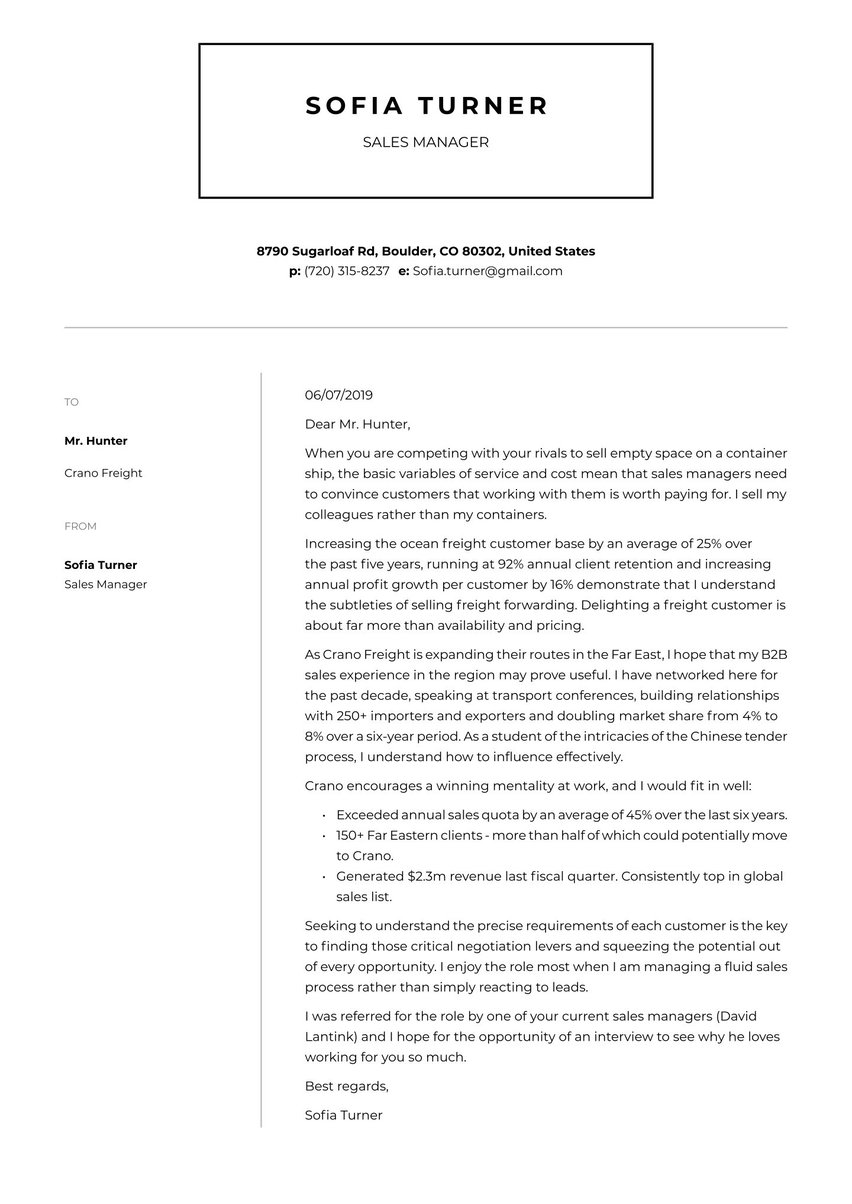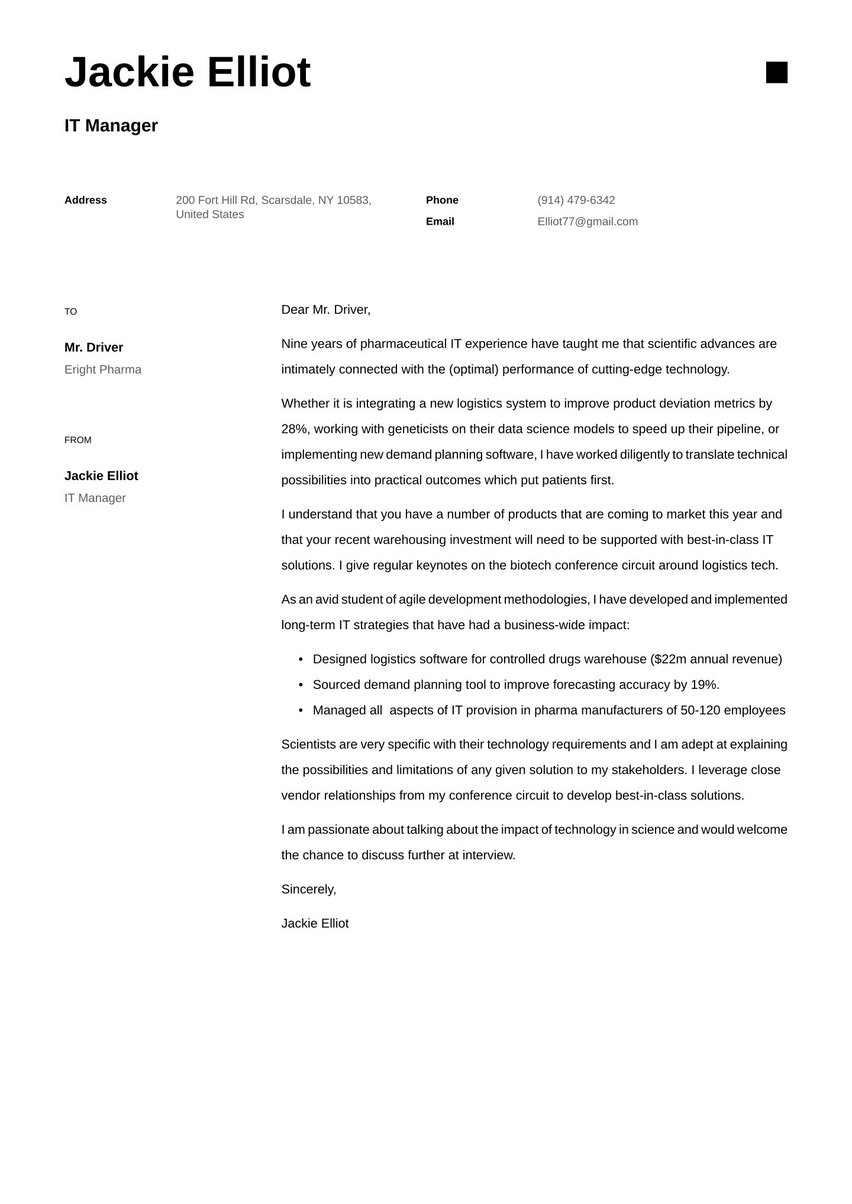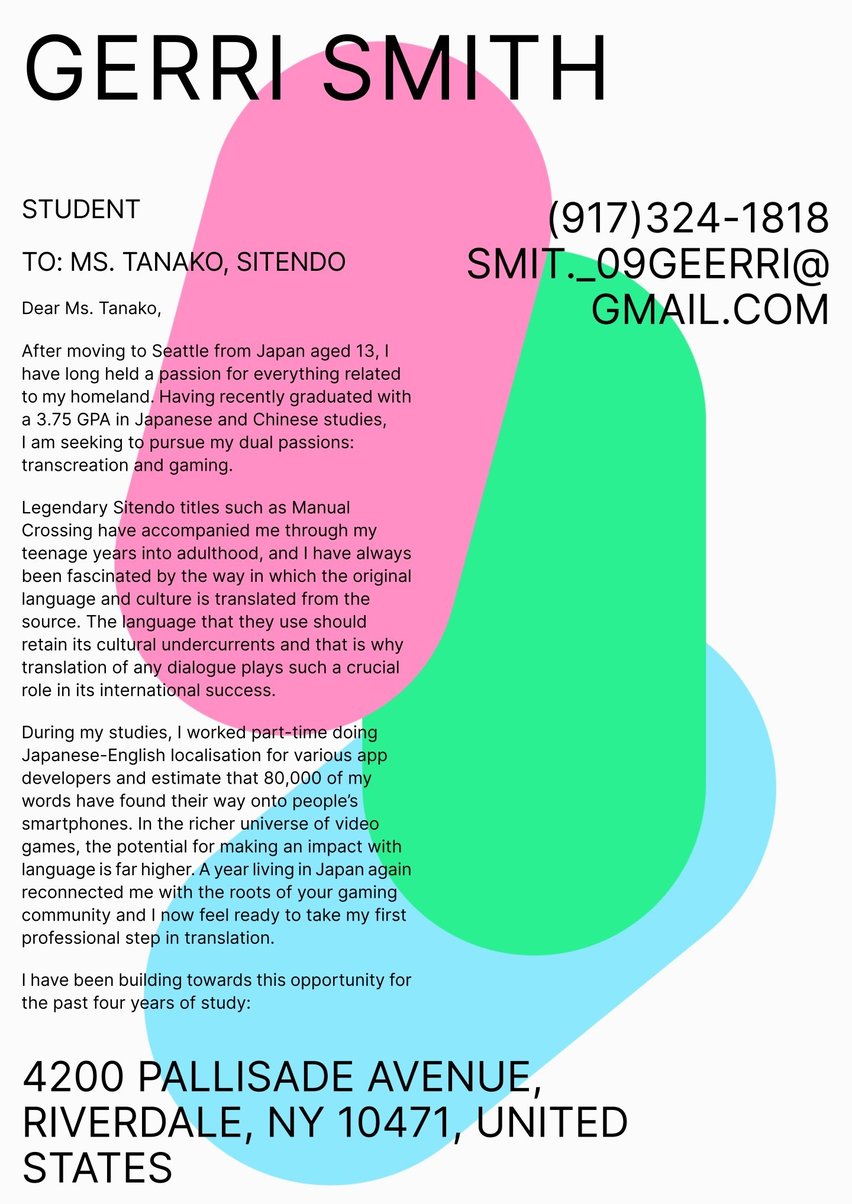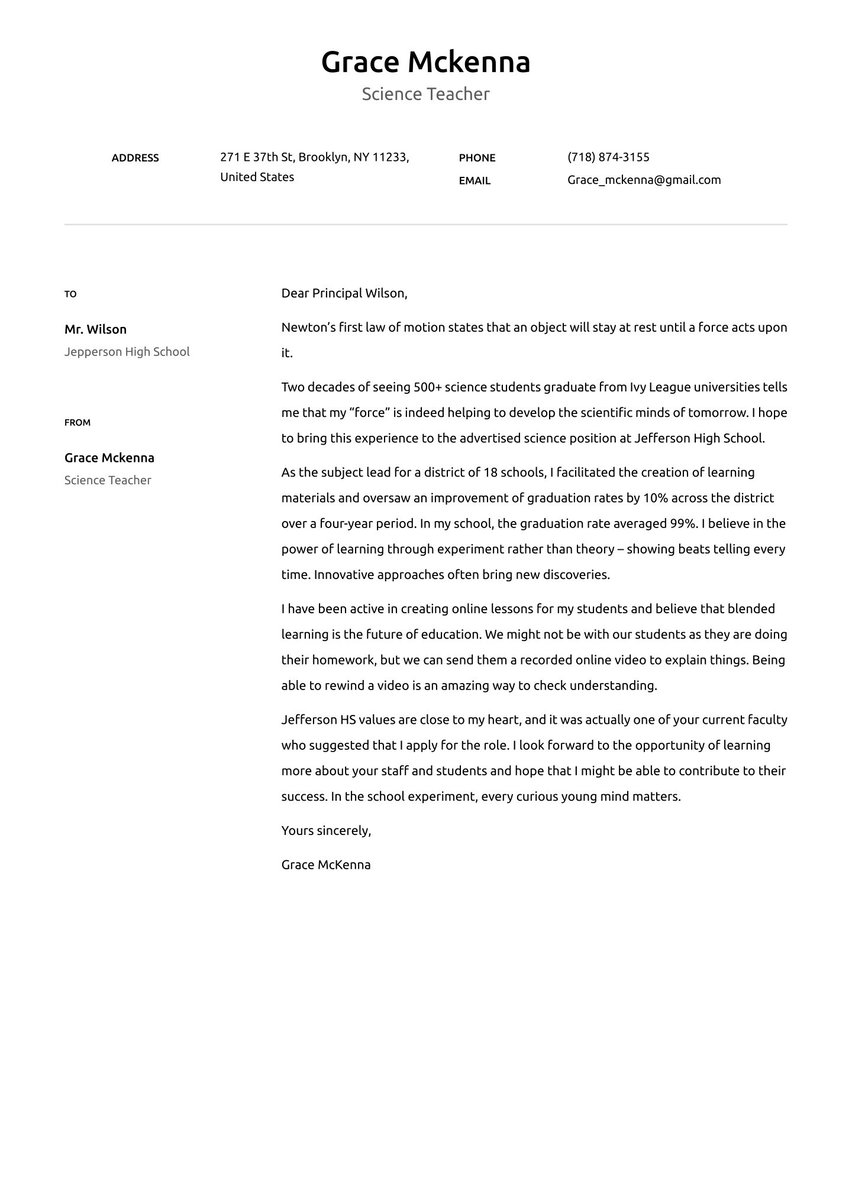If you’re a physician who can write 10 to 15 prescriptions a day, then trust us — you can write a one-page doctor cover letter to get the job you really want. Just don’t do it in your own handwriting!
Doctors are commonly thought of as occupying the top of the pyramid of career aspirations. And rightfully so, as there is perhaps no profession that requires so many years of postgraduate study and subsequent hands-on training before they’re considered full-fledged practitioners.
And yet, despite being able to write a 3,000-word article for the New England Journal of Medicine without batting an eye, many of these same learned professionals would find it extremely challenging to write a one-page cover letter in plain English in order to get a better job.
This writing guide, along with the adaptable wording it provides from a doctor cover letter example, will offer an overview of everything a physician needs to know to write a succinct, persuasive and successful cover letter to accompany that stellar resume.
What we’ll discuss here:
- The best format for a doctor cover letter
- Step-by-step advice for ensuring each of the six cover letter sections has an optimal impact
- Common cover letter writing mistakes to avoid
Let’s scrub in and get started!
Resume.io is a resource for professionals in all fields and of all experience levels. Check out our 180+ free cover letter samples for even more useful writing tips and practical advice.
If you’d like some additional inspiration before creating your doctor cover letter, review some of our related medical cover letter samples:
- Pharmacist Cover Letter Sample
- Physical Therapist Cover Letter Sample
- Lab Technician Cover Letter Sample
- Dentist Cover Letter Sample
- Occupational Therapy Cover Letter Sample
- Pharmacy Technician Cover Letter Sample
- CNA Cover Letter Sample
- Healthcare Cover Letter Sample
- Medical Cover Letter Sample
- Physician Assistant Cover Letter Sample
- Veterinary Cover Letter Sample
- Phlebotomist Cover Letter Sample
Best format for a doctor cover letter
Choosing the best format for a doctor cover letter involves issues of structure, design and layout. Let’s first look at the “skeleton” — the underlying structure and framework — before we add flesh to the bones.
We’ve heard of doctors compiling academic CVs (which are sort of like resumes on steroids) that can be 80 pages long! Well, sorry, but here you’re going to learn how to write something that’s ONE page long. And your correspondents will thank you for it.
Is it ever acceptable to write a cover letter that’s longer than one page? Sure, in some cases. But the tried-and-true rule is that a one-page cover letter will never be considered too short, and it’s the safest option.
Here are the essential elements of every cover letter:
- Header with contact info
- Greeting
- Introduction
- Body
- Conclusion
- Sign-off and signature
That’s the “skeleton,” the basic structure. Other format considerations involve design and layout — making your letter look as good as it reads. There are many decisions to make that will affect the look of your cover letter, including fonts, font sizes, text alignment, paragraph styles, margins, spacing, visual balance and use of white space.
Our pre-designed cover letter templates have already addressed all the design issues mentioned above. Nothing could be easier than using a template along our free cover letter builder tool, leaving you with just one job: Write the letter!
Below is a doctor cover letter example that you can customize for the position and hiring organization.
Dear Dr. Madeley,
Having worked as a family doctor in two general practices over the past three decades, I have cared for multiple generations of patients and become an additional “member of the family” in many cases. Your job description for the position being filled emphasizes the close-knit nature of The Medical Care Company’s patient base. From experience, I recognize that in a small-town medical practice such as yours, the level of trust that team members earn in the course of their work cannot be underestimated.
Seeing an average of 25 patients a day over such a long period has found me dealing with some of the rarest medical situations, while also exploring innovative treatment options for some of the most common cases. I know that heart disease, obesity and strokes are particularly frequent in your community. In my last practice, a mix of education and proactive medical interventions helped to reduce heart issues by 45% and obesity rates by 20%. Helping patients to understand what they are doing to their bodies was a contributing factor.
I have taken time out from general practice on two occasions to undertake year-long work experience secondments in a local hospital. These experiences were instrumental in enhancing my knowledge and capacity to provide optimal medical care to patients.
The age profile of my previous patients is consistent with the make-up of your community: many young families and a higher-than-normal proportion of elderly care home residents. I have therefore focused mainly on delivering high-quality care to both pediatric and geriatric patients.
I enclose some references from colleagues and previous patients as a testament to my medical expertise. It would be my pleasure to discuss the opening at your clinic during an interview..
Sincerely,
Alison Wayde
Cover letter header
The cover letter header (which used to be called a letterhead, very common in doctor’s offices) is the attractively designed space at the top of the page, or sometimes down one side. Either way, it's meant to be noticed first. The header contains your name, occupation, address, phone number, email, possibly your photo, and perhaps your LinkedIn profile or another website that showcases your professional credentials.
It would be a major oversight if you wrote the perfect cover letter but forgot to include any information on how to reach you. That’s why you need a header.
But in addition, the header is an important design element that serves the additional purpose of giving your letter an eye-pleasing look. Good header design involves creative use of typography, spacing, layout and often a splash of color. Make the most of it, because everything below the header will be solid black chunks of text.
Again, we encourage you to check our professionally designed cover letters, find a header you like and make it your own. Will Rogers said, “Everybody is ignorant, only on different subjects.” We don’t expect doctors to know how to design cover letter headers, and we hope doctors don’t expect us to know how to remove tonsils.
Goal of the cover letter header: Set your job application apart in an eye-pleasing manner that makes the identifying information stand out and makes the letter look more inviting to read.
Cover letter greeting
The cover letter greeting, also known as a salutation, is the line that usually starts with the word “Dear,” followed by “Mr.”, “Ms.”, or “Dr.”, the recipient’s last name, and then a colon or comma.
There are acceptable variants to the word “Dear,” but let’s not overthink this. “Dear Dr. Singh: ” would be a flawless cover letting greeting, assuming you’ve got the right person and spelled the name right. You could experiment with “Greetings Dr. Singh,” or even “Hello Sanjay,” (if you happen to know this person). But as in medicine, so in cover letters: There are risks in venturing too far from proven successes.
It’s highly recommended that you find out the name of the person who is processing applications for the job you’re seeking. If it’s not mentioned in the job listing, and you can’t find it online, consider the old-fashioned sleuthing tactic of just calling up the company and asking.
Failing that, address your cover letter to a position or search committee team, such as: "Dear XYZ Hospital Medical Director" or "Dear Cardiologist Search Committee."
Never use these generic greetings in your cover letter: " To Whom It May Concern" or " Dear Sir or Madam." Both are off-putting because they sound cold, impersonal and old-fashioned.
Goal of the cover letter greeting: Form a direct, immediate connection with the employer that’s personalized to the extent possible.
Cover letter introduction
Your cover letter introduction should be a compelling, intriguing, fascinating first paragraph that makes it almost impossible for the recipient to stop reading. No pressure!
Your introduction needs to accomplish a couple of objectives: Make it clear what job you’re seeking, and make a persuasive opening case that you’re the ideal candidate for this job. It doesn’t have to provide all the facts yet, but it should let the reader know that you have the goods in the bag.
Goal of the cover letter introduction: Make an up-front case for being the best hiring remedy, as a doctor with well-matched qualifications and personal attributes.
This excerpt from our doctor cover letter sample can serve as a model for your greeting and introduction:
Dear Dr. Madeley,
Having worked as a family doctor in two general practices over the past three decades, I have cared for multiple generations of patients and become an additional “member of the family” in many cases. Your job description for the position being filled emphasizes the close-knit nature of The Medical Care Company’s patient base. From experience, I recognize that in a small-town medical practice such as yours, the level of trust that team members earn in the course of their work cannot be underestimated.
Cover letter middle part (body)
The cover letter body, the middle sections, are where you need to do the heavy lifting that makes the case that the employer you’re writing to needs you on its team.
If your biggest selling point is your years of experience in medicine, go big with your experience. If you’re young but you just graduated in flying colors from the Columbia University medical school, lead with that. Nobody knows you better than you, so find a way to accentuate your most impressive qualifications for the job you want.
In describing your experience, be specific, using facts and figures wherever possible. And try to include at least one anecdote, a short little story where you relate how you once faced a vexing job-related problem and managed to resolve it to everyone’s satisfaction.
It’s always a good idea to mention the name of the company where you’re seeking employment, and if possible to explain specifically how you think your contribution could make this company more efficient, successful and profitable.
Goal of the cover letter body: Reflect on your most relevant and compelling accomplishments to convey how this employer would benefit from your contributions as a committed, solution-focused medical team member.
Here’s the body section from our doctor cover letter sample:
Seeing an average of 25 patients a day over such a long period has found me dealing with some of the rarest medical situations, while also exploring innovative treatment options for some of the most common cases. I know that heart disease, obesity and strokes are particularly frequent in your community. In my last practice, a mix of education and proactive medical interventions helped to reduce heart issues by 45% and obesity rates by 20%. Helping patients to understand what they are doing to their bodies was a contributing factor.
I have taken time out from general practice on two occasions to undertake year-long work experience secondments in a local hospital. These experiences were instrumental in enhancing my knowledge and capacity to provide optimal medical care to patients.
The age profile of my previous patients is consistent with the make-up of your community: many young families and a higher-than-normal proportion of elderly care home residents. I have therefore focused mainly on delivering high-quality care to both pediatric and geriatric patients.
How to close a doctor cover letter (conclusion and sign off)
In your final paragraph, the cover letter conclusion, wrap up pleasantly but also include some kind of “call to action” to your correspondent. You can say you look forward eagerly to a reply. You might mention that you would be delighted to show up for an interview, in person or remotely. Plant the thought that the recipient of your letter should get back to you and not just “sit on” your letter.
Close your cover letter with a simple “Sincerely,” “Best regards,” “Thank you for your time” or an equivalent phrase. Add a space below that and then type your full name.
If you’re planning to send a hard copy, you need to provide an actual signature between the sign-off and your typed name, but this is not necessary in electronic correspondence.
Goal of the cover letter closing: End on an confident, enthusiastic note with a call to action that implies you expect to hear back from the employer.
Check out the conclusion from our doctor cover letter sample:
I enclose some references from colleagues and previous patients as a testament to my medical expertise. It would be my pleasure to discuss the opening at your clinic during an interview..
Sincerely,
Alison Wayde
Common mistakes to avoid
Here are some common mistakes that people make in writing cover letters:
- Typos and other errors in spelling, grammar or punctuation. You can’t afford any writing mistakes in a one-page letter.
- Mass-produced, one-size-fits-all letters: Each cover letter should be tailored to address the needs of each prospective employer.
- Cliches, HR-speak and “fluff”: Use fresh, original, meaningful language that you haven’t borrowed from somewhere else.
- Irrelevant material: Any language that doesn’t help convince an employer that you’re the right person for the job should be deleted.
Key takeaways
- In almost all cases, a cover letter should be one page only, so trim the fat and keep the lean.
- You must include the six essential elements of a cover letter: header, greeting, introduction, body, conclusion and sign-off/signature.
- Your letter should look as good as it reads, so pay close attention to the design, layout and overall visual impression.
- Use a professional cover letter template to sidestep common design errors so you can focus on just writing the letter.
Now that you’ve reached the end of this guide, we hope you’ll see that writing a great doctor cover letter is far simpler than open heart surgery.









